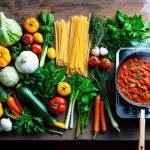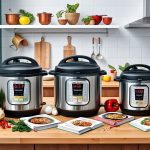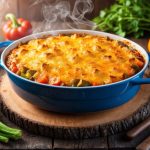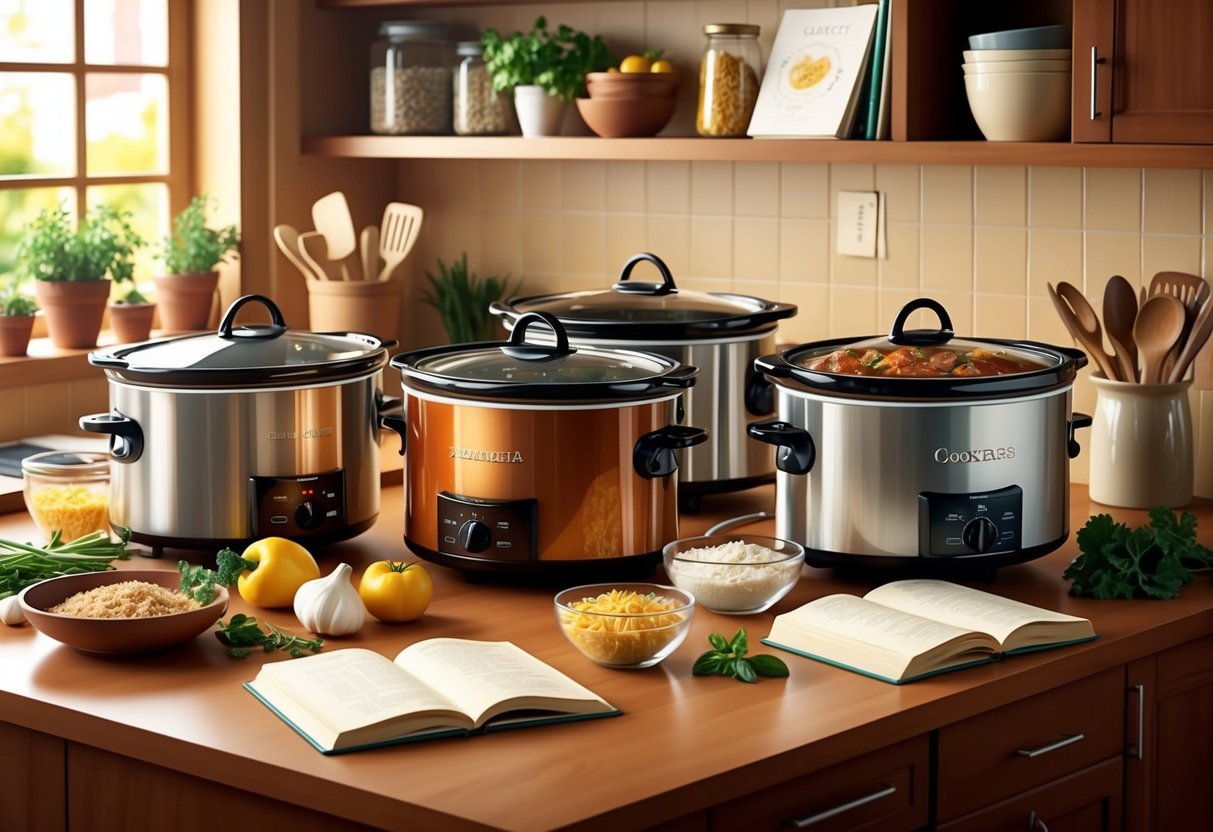
Finding the best slow cooker makes meal prep effortless for busy home cooks looking to save time and consistently enjoy flavorful, home-cooked dishes.
The top slow cookers combine user-friendly features such as programmable settings, precise temperature control, and easy clean-up, making them essential for anyone managing a hectic schedule.
Leading choices include highly-rated models from Hamilton Beach, GreenPan, Cuisinart, and Crock-Pot, each offering unique advantages for different kitchen needs.
From compact units perfect for small households to versatile multi-cookers capable of sautéing and steaming, today’s slow cookers cater to every cooking style and household size.
Whether it’s setting up an overnight pot roast or whipping up healthy soups and stews, these appliances allow home cooks to prepare nutritious meals with minimal effort.
What Is a Slow Cooker?
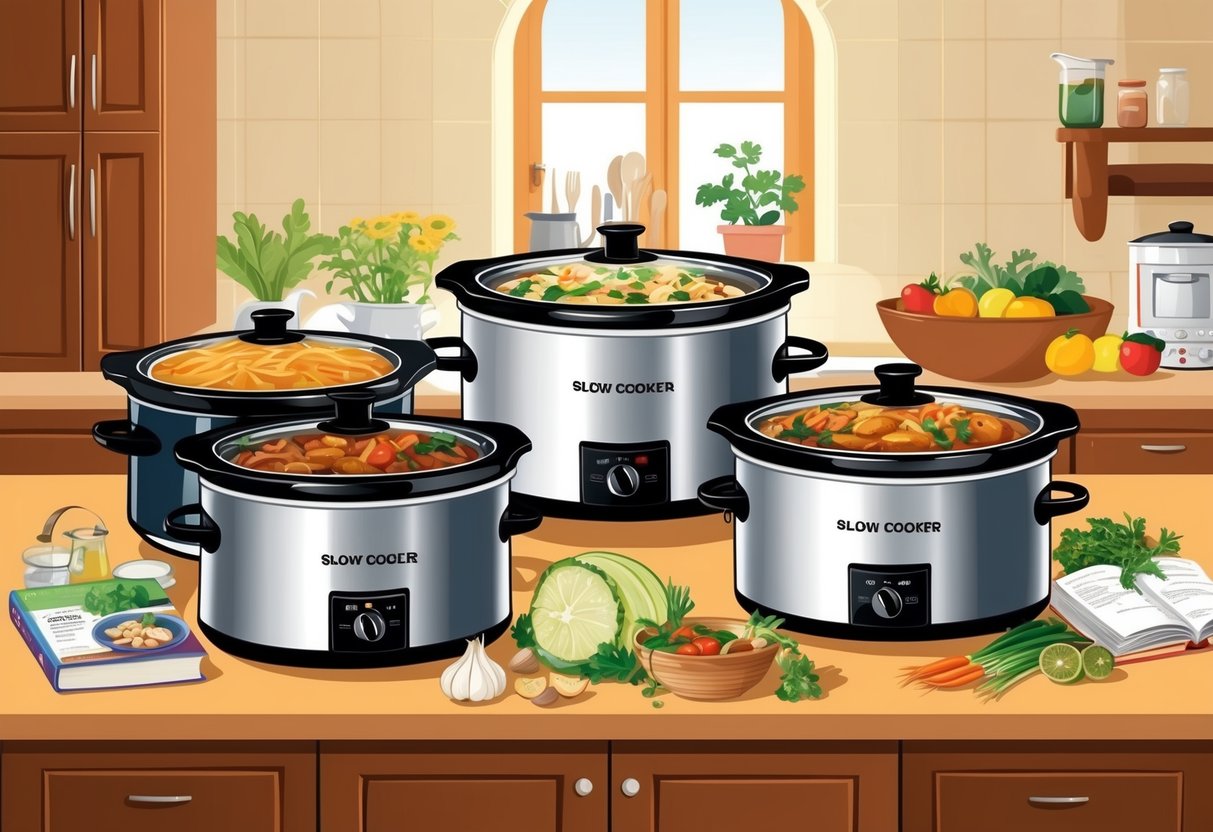
A slow cooker is an electric cooking appliance designed for unattended, gradual cooking using low, steady heat.
This method helps tenderize tougher cuts of meat, develop rich flavors in soups and stews, and frees up time for people with busy schedules.
How Slow Cookers Work
Slow cookers use an electrical heating element that surrounds a removable ceramic or metal insert (commonly known as a crock).
The heating element warms the insert slowly and evenly, maintaining temperatures that typically range from 170°F to 280°F.
Food cooks with the lid closed, trapping moisture and heat inside.
This prevents loss of flavor and helps ingredients become tender without constant attention.
Many slow cookers offer programmable timer settings that automatically switch to a warm mode when the cooking time ends.
Common meal prep times range from four to ten hours.
Benefits for Busy Home Cooks
Slow cookers are well-suited to people who have limited time for daily meal preparation.
With minimal prep, users can add uncooked ingredients in the morning and return to a fully cooked dinner in the evening.
A major benefit is the ability to prepare large batches of food such as shredded meats, soups, or casseroles, which can then be portioned out for later.
Using a slow cooker also helps save money by making lower-cost ingredients, such as dried beans and tougher meat cuts, tender and flavorful.
The consistent, low temperature reduces the risk of burning food, unlike stovetop or oven cooking.
The removable insert is usually dishwasher safe for fast, convenient cleaning.
Common Types of Slow Cookers
The term “slow cooker” often refers to the well-known Crock-Pot brand, but there are several types of slow cookers available.
Traditional models generally feature a manual dial with simple low, high, and warm settings.
Modern programmable slow cookers offer digital timers and automatic switches to keep cooked food warm.
Some multi-cookers function as slow cookers, pressure cookers, and rice cookers in one appliance.
These versatile models often include extra features like browning or sautéing.
Size options typically range from small 2-quart models for singles or couples, up to large 8-quart versions ideal for families or meal prepping.
Many experts recommend 6-quart slow cookers for their balance of capacity and countertop space.
Choosing the right slow cooker depends on storage space, household size, and desired features.
Key Features to Look for in Slow Cookers
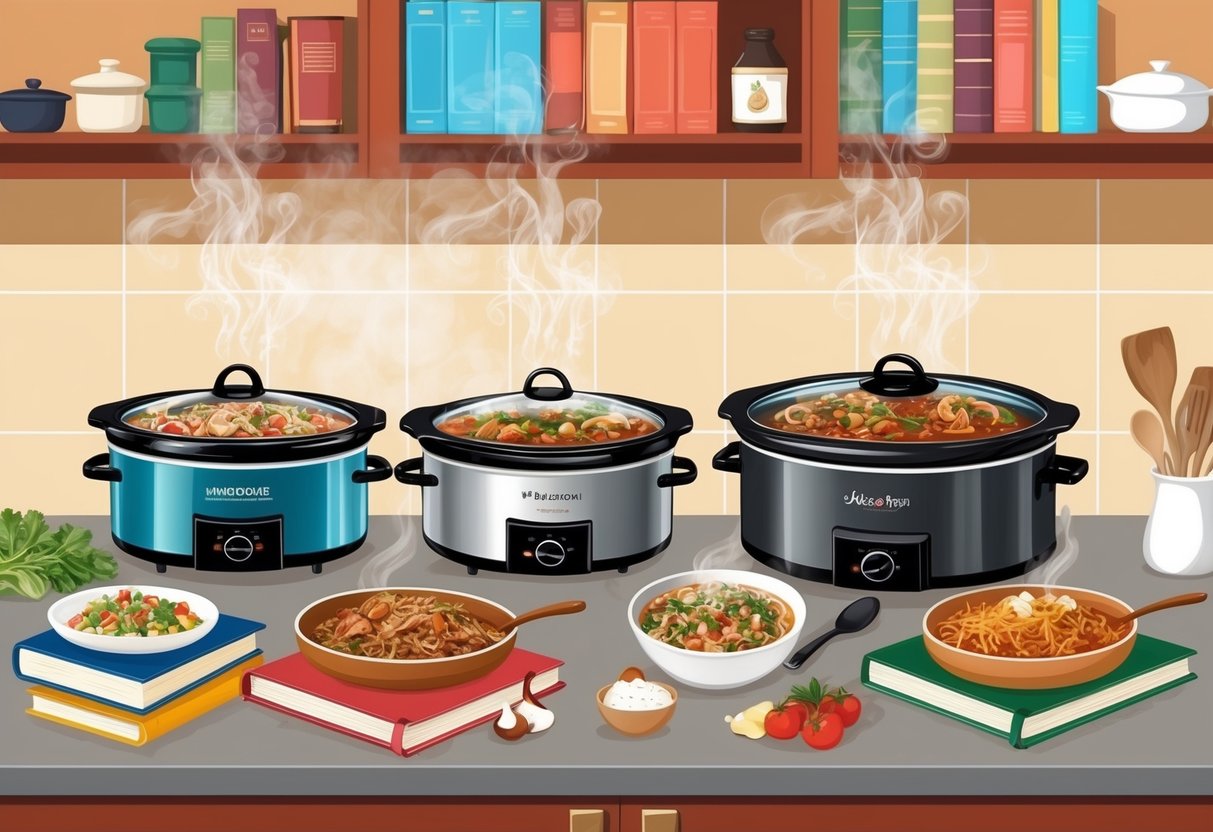
Selecting a slow cooker that fits demanding schedules revolves around understanding programmability, precise temperature management, durable construction, and reliable sealing systems.
The right combination of these features streamlines meal preparation and ensures consistent results, even for novice home cooks.
Programmable Settings
A programmable slow cooker offers flexibility for busy routines and reduces hands-on cooking time.
Digital programmable controls let users set specific cooking durations, start times, and automatic switches to “warm” mode.
This prevents overcooking and maintains food at a safe temperature until mealtime.
Key advantages of advanced programmable models include delayed start timers, multiple cooking modes (such as low, high, and keep warm), and clear digital displays.
For example, slow cookers with programmable settings, like several top-rated 2025 slow cookers, are ideal for those who need meals ready after work.
This feature is essential for recipes that require several hours of unattended cooking, like pot roast or chili.
It ensures food safety, even if plans change or you arrive home later than expected.
Temperature Control and Probes
Accurate temperature control is crucial for even cooking and food safety.
Some of the best-rated slow cookers, such as the GreenPan Elite 6-Quart Slow Cooker, are praised for their steady, consistent temperatures.
Units featuring a built-in temperature probe allow users to track internal food temperatures, particularly for large cuts of meat.
Temperature probes are especially helpful for recipes that benefit from precision, like pulled pork or brisket.
Look for models where you can set a target temperature; the cooker will automatically switch to “keep warm” when that temperature is reached.
This technology reduces the risk of overcooking, preserves food texture, and improves results with minimal supervision.
Manual temperature adjustment, combined with a probe, gives more control compared to models with just simple high or low settings.
For frequent meat preparation, a digital programmable slow cooker with these options is a worthwhile upgrade.
Material and Insert Types
The material and design of the insert affect heat distribution, cleaning, and durability.
Ceramic inserts are common and well-loved for their ability to retain and evenly distribute heat.
They are generally dishwasher safe and resist scratching better than metal options.
Some slow cookers use nonstick metal inserts, which make sautéing or browning easier, though these can be susceptible to scratching and may require more cautious cleaning.
Removable inserts, especially those that are oven- and dishwasher-safe, add convenience for both cooking and cleanup.
For larger families or batch cooking, a 7-quart slow cooker with a high-quality ceramic insert offers ample space and even cooking for stews, soups, or whole chickens.
The insert’s durability and material composition directly influence not only the cooker’s performance but also how simple it is to maintain.
Lid and Locking Mechanisms
A well-designed lid helps trap heat and moisture, ensuring tender results.
Many slow cookers now feature glass lids, which let you check on your food without lifting and releasing heat.
Tight-fitting lids are a must for efficient cooking.
For portability, look for a model with a secure locking lid.
This is especially useful if you need to bring hot dishes to potlucks, family gatherings, or cookouts.
Locking mechanisms prevent spills and leaks during transport.
Slow cookers with both a locking lid and gasket help form an airtight seal.
This traps steam, maximizes moisture retention, and maintains stable temperatures throughout the cooking process.
For those who travel with cooked meals, such safety features are indispensable.
Some of the best slow cookers for 2025 highlighted these locks as major benefits, offering reliable transport and spill prevention.

